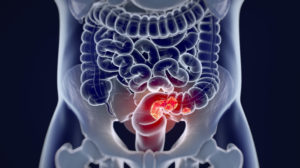Hypertension (HTN) is currently defined as systolic blood pressure (SBP) values of 130mmHg or more and/or diastolic blood pressure (DBP) more than 80 mmHg. Most cases of hypertension are idiopathic, which is also known as essential hypertension (EH).
More than one billion adults worldwide have hypertension, with up to 45% of the adult populace being affected by the disease. In the United States, HTN alone accounts for more cardiovascular disease-related deaths than any other modifiable risk factor and is second only to cigarette smoking as a preventable cause of death for any reason.
Environmental factors, i.e., one’s diet, helps sustain gut-liver axis balance, along with other factors such as immune, genetic, and epigenetic signals. It is known that an imbalance in this elaborate, entwined system significantly increases the risk for EH. Recent studies indicate that both macro-and micronutrients interrupt regulatory microRNA (miRNA) expressions and thus, alter multiple cellular processes that contribute to EH.
One study looked further at how nutritional epigenetics influences EH, and what other surgical processes affect.
Read the original publication of this study here: [Impact of Nutritional Epigenetics in Essential Hypertension: Targeting microRNAs in the Gut-Liver Axis]
This study reviewed the present knowledge on interactivity between dietary elements and microRNAs (miRNAs) in essential hypertension (EH) pathogenesis.

Impact of Nutritional Epigenetics in Essential Hypertension: Targeting microRNAs in the Gut-Liver Axis
The publishers reviewed the literature on recent studies surrounding nutritional epigenetics and EH. The following outcomes were noted.
Using microRNAs to predict EH
Epigenetics is shown to be a novel and powerful hallmark of EH progression, which encompasses DNA methylation, post-translational histone modifications, and miRNAs. By studying epigenetics, the heredity aspects of EH and its phenotypes may be defined. Overall, analyses of the circulating miRNA signatures present a prognostic tool and pave the way for precision medicine of EH patients.
Examples of nutritional epigenetics on EH
Carbohydrates: Consumption of dietary fructose alone is sufficient to elevate blood pressure. It also upsets the electrolyte balance and affects nitric oxide (NO) bioavailability, oxidative stress, and vascular integrity, all of which increase the risk factor for EH. A high-fructose diet significantly altered the expression levels of certain miRNAs related to lipid metabolism.
Lipids and Fatty Acids: Consuming too many lipids can lead to hyperlipidemia, and too much dietary fat increases the risk of EH. One example study of mothers who consumed a high-fat diet during the perinatal period recorded an increase in the probability of offspring exhibiting fetal reprogramming toward EH development. Other fatty acids influence EH in a variety of ways, including diminishing NO production, damaging the integrity of blood vessels, worsening inflammation, and increasing oxidative stress.
Micronutrients: Five main micronutrients known to regulate blood pressure: sodium, chloride, calcium, potassium, and magnesium. MiRNA sequencing technology has identified nine miRNAs suitable as biomarkers for salt-sensitive EH in humans. Different studies found potential benefits for use in investigating EH pathogenesis.
Probiotics and Prebiotics for Gut Microbiota: One of the most orthodox options in EH management is the consumption of either prebiotics or probiotics because of the good metabolites that are generated in the gut.
Surgery for EH
As obesity serves as a risk for EH, bariatric surgeries that involve a partial restriction of the stomach have been successful in the caring of long-term weight loss and, as such, lower the incidence of EH. They include adjustable gastric banding, bariatric bypass, biliopancreatic diversion, and vertical banded gastroplasty. Interestingly, positive changes in miRNA profiles of post-surgery patients were recorded within three months.
“A recent longitudinal genome-wide methylation study revealed that Roux-en-Y gastric bypass patients obtain novel CpG sites associated with dysregulation of systolic blood pressure, which has provided a plausible epigenetic mechanism to EH post-surgical treatment.”
Takeaways:
- Overall, analyses of the circulating miRNA signatures present a prognostic tool as well as pave the way for precision medicine of EH patients.
- Diet has a significant influence on EH. Different food groups, micronutrients, and probiotics can alter the expression levels of certain miRNAs.
- The review suggests that a healthier change in diet, for example, Mediterranean or plant-based, can help prevent or treat EH.
- Surgeries have been found to be successful in reducing cases of EH.
- Being the first review into the topic, further studies are needed to corroborate the correlations made.
You can read the original publication of this study here: [Impact of Nutritional Epigenetics in Essential Hypertension: Targeting microRNAs in the Gut-Liver Axis]





